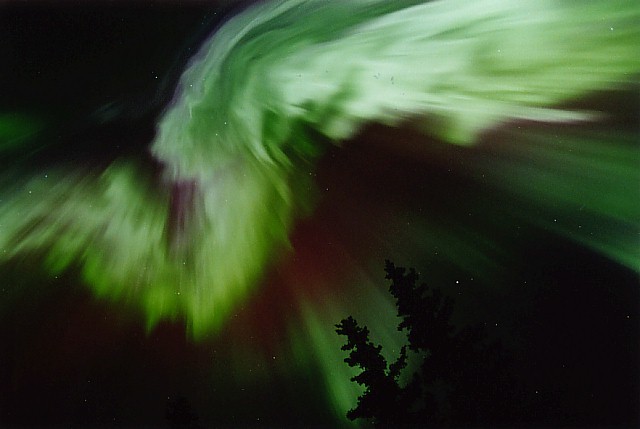Explanation: Have you checked the space weather report lately? With a coronal mass ejection (CME) headed our way and an immense sunspot group tracking across the solar photosphere, skygazers should be on the alert. The interaction of clouds of energetic particles from the active Sun with planet Earth's magnetosphere often produce significant geomagnetic storms and auroral displays. In fact, just days ago on March 24, photographer Jan Curtis pointed his camera straight up to captured this awesome auroral curtain towering in clear and very cold (-25F) skies over Fairbanks, Alaska, USA. Now, forecasts indicate that a recent Earth-directed CME may also trigger moderate geomagnetic storms over the next few days. Night sky aurora, possibly extending to middle latitudes, would be most likely on March 30-31.
1999 2000 2001 2002 2003 2004 2005 2006 2007 2008 2009 2010 2011 2012 2013 2014 2015 2016 2017 2018 2019 2020 2021 2022 2023 2024 2025 |
Yanvar' Fevral' Mart Aprel' Mai Iyun' Iyul' Avgust Sentyabr' Oktyabr' Noyabr' Dekabr' |
NASA Web Site Statements, Warnings, and Disclaimers
NASA Official: Jay Norris. Specific rights apply.
A service of: LHEA at NASA / GSFC
& Michigan Tech. U.
|
Publikacii s klyuchevymi slovami:
aurora - polyarnoe siyanie - coronal mass ejection - geomagnetic storm - active Sun - Magnitnaya burya - koronal'nyi vybros
Publikacii so slovami: aurora - polyarnoe siyanie - coronal mass ejection - geomagnetic storm - active Sun - Magnitnaya burya - koronal'nyi vybros | |
Sm. takzhe:
Vse publikacii na tu zhe temu >> | |
